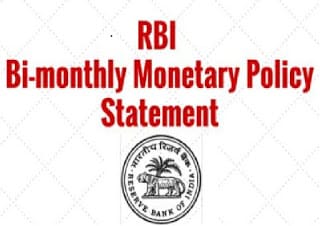The Reserve Bank of India (RBI) announced its second Bi-Monthly Monetary Policy Rates for 2019-20 in Mumbai on June 6, 2019. The three-day policy review meeting by the six members of Monetary Policy Committee (MPC) was headed by RBI Governor Shaktikanta Das with the members Dr Chetan Ghate, Dr Pami Dua, Dr Ravindra H. Dholakia, Dr Michael Debabrata Patra, Dr Viral V Acharya. The next monetary policy statement is scheduled from August 5-7, 2019.
 Highlights of the meeting:
Highlights of the meeting:
The following announcements were made in the meeting:
In a rare 6-0 majority, Repo rate was reduced by 25 bps under the liquidity adjustment facility (LAF) to 5.75 per cent for third time in a row. It fell below 6% for the first time in 9 years since September 2010.
Current Policy rates:
| Repo Rate | 5.75% |
| Reserve Repo Rate | 5.50 |
| Marginal Standing Facility(MSF) Rate | 6.0% |
| Bank Rate | 6.0% |
Reserve Ratios:
| Cash reserve Ratio(CRR) | 4% |
| Statutory Liquidity Ratio(SLR) | 19% |
- RBI changed the policy stance to accommodative from neutral.
- RTGS and NEFT charges were waived off to promote digital transactions.
- A panel to review ATM charges and fees levied by banks was set up.
- It insisted to issue draft guidelines for ‘on tap’ licensing of small finance banks by August.
- It flagged sharp slowdown in investments, moderation in private consumption growth as concern.
- Average daily surplus liquidity in the system stood at Rs.66,000 crore in early June.
- Foreign Exchange Reserves stood at $421.9 billion on May 31, 2019.
RBI raised the Retail Inflation Forecast for April-September FY20 to 3-3.1%
RBI raised the Retail Inflation Forecast marginally to 3-3.1% for the first half of the current fiscal due to a rise in food prices mainly vegetables. It forecasted risks to inflation trajectory from monsoon uncertainties, an unseasonal spike in vegetable prices, crude oil prices, financial market volatility, and fiscal scenario.
- In the first bi-monthly policy, it had forecasted that the retail inflation will be hovering in the range of 2.9-3% for six months till September.
- For the second half of this fiscal, October-March, it has been cut to 3.4-3.7% as against RBI’s previous projection of 3.5-3.8%.
GDP growth forecast lowered to 7% from 7.2% for FY20 by RBI’s MPC
The RBI’s MPC (monetary policy committee) lowered its Gross Domestic Product (GDP) growth forecast to 7% from 7.2% for FY 20 due to a slowdown in domestic activities and escalation in global trade war.
- In the April monetary policy, the growth of Gross Domestic Product (GDP) for 2019-20 was projected at 7.2% – in the range of 6.8-7.1% for the first half of the fiscal and 7.3-7.4% for the second part – with risks evenly balanced.
- Data for January-March quarter 2018-19, indicated that domestic investment activity has weakened and overall demand has been weighed down partly by slowing exports.
Static Information:
♦ Repo Rate: It is the rate at which RBI lends money to commercial banks.
♦ Reverse Repo rate: It is the rate at which RBI borrows money from commercial banks.
♦ Cash Reserve Ratio (CRR): The share of net demand and time liabilities (deposits) that banks must maintain a cash balance with the Reserve Bank.
♦ Statutory Liquidity Ratio (SLR): The share of net demand and time liabilities (deposits) that banks must maintain in safe and liquid assets, such as, government securities, cash, and gold.
♦ Bank Rate: It is the rate at which the Reserve Bank is ready to buy or rediscount bills of exchange or other commercial papers for the long term.
♦ Marginal Standing Facility Rate (MSF): The rate at which the scheduled banks can borrow funds from the RBI overnight, against the approved government securities is termed as MSF.

